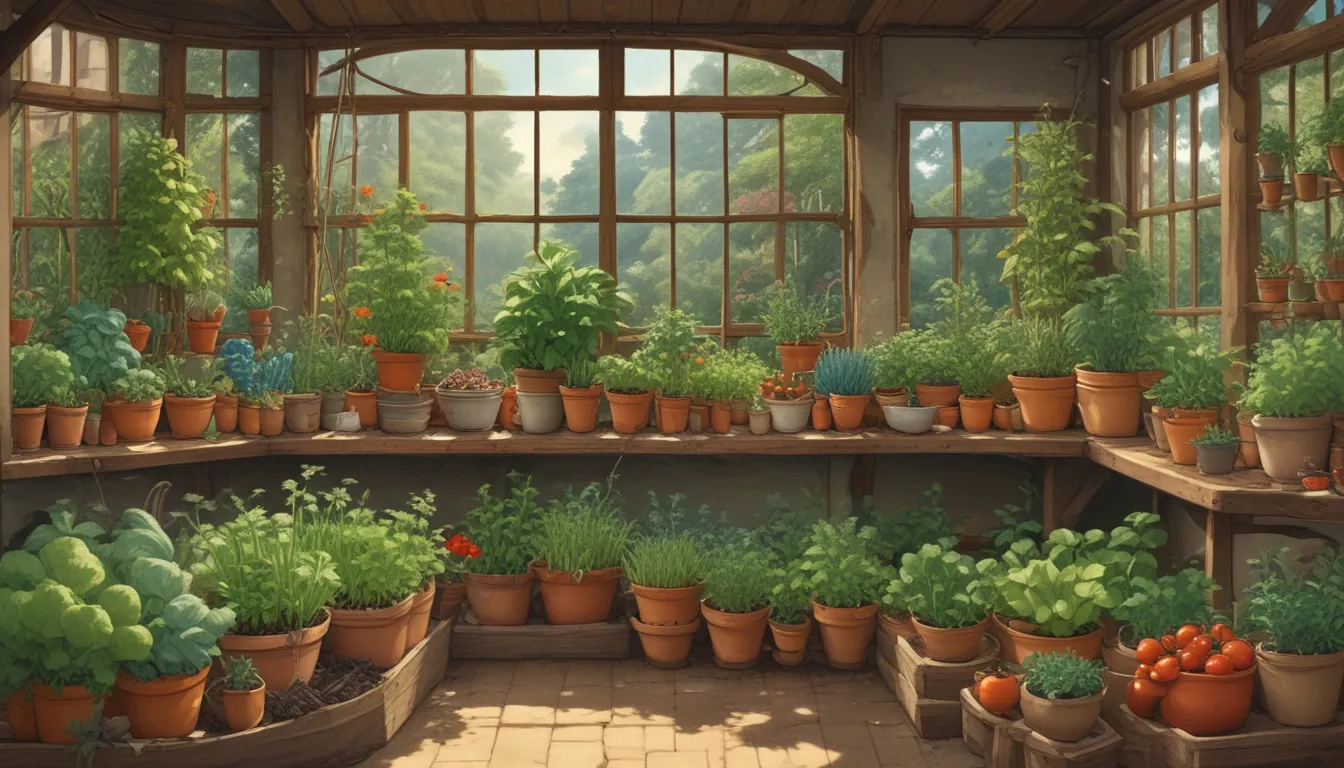Guide to Planting Vegetable Seeds: Indoors vs. Outdoors

Congratulations! You’ve got your hands on some fantastic seed packets, you’ve gathered all your seed starting essentials, and you’ve even mapped out your garden plan. It sounds like you’re all set to start planting and growing your own garden paradise!
But here’s the question: do you know which seeds thrive when planted directly into your garden soil, and which ones prefer the safety of being started indoors?
As you gear up to plant your veggie seeds, there are some essential guidelines to keep in mind. Some plants flourish when sown directly into your garden, while others benefit from the sheltered conditions that indoor sowing provides.
In this detailed guide, we’ll not only cover which veggies typically do better planted indoors or outdoors, but we’ll also delve into why certain plants prefer one method over the other. By the end of this article, you’ll be equipped to make informed decisions for all the varieties you aim to grow in the future.
Let’s delve into what you’ll learn in this comprehensive guide:
What You’ll Learn
- Count Your Growing Days: Understanding the length of your growing season is crucial for successful gardening.
- Direct Sow Outdoors: Ideal for cool season crops, short season tender annuals, and seedlings that don’t transplant well.
- Start Indoors: Best for long season tender annuals, long season varieties, slow-growing cool season crops, and other specific categories.
Count Your Growing Days
Before we jump into the specifics of planting vegetable seeds, it’s essential to grasp the duration of your growing season. The number of frost-free days between your last spring frost and first fall frost is a critical factor that influences your gardening success.
Knowing your growing season length is crucial. It’s like the secret recipe that unlocks bountiful harvests and delightful gardening experiences. A tool from the National Gardener’s Association can help you calculate your frost-free days based on your zip code.
Armed with this knowledge, you can tailor your planting strategies to suit the unique conditions of your local growing season.
Direct Sow Outdoors
While it’s enticing to envision a garden filled with lush greenery sprouting directly from the earth, the reality of direct sowing is both practical and efficient. Let’s explore which categories of plants thrive when sown directly in your garden:
Cool Season Crops
Cool season crops love the chilly embrace of spring temperatures. These hardy plants are an excellent choice for direct sowing. Their adaptability to cold conditions makes them perfect candidates for early planting.
Examples of cool season crops suitable for direct sowing include arugula, kale, peas, beets, and radishes.
Short Season Tender Annuals
Tender annuals with short growing requirements are another fantastic option for direct sowing. These crops can reach maturity within a short summer season, making them ideal for planting directly in your garden.
Short season tender annuals include beans, cucumbers, and various types of melons and squashes.
Seedlings that Don’t Transplant Well
Certain vegetable varieties, such as carrots, beans, beets, and corn, are best directly sown due to their delicate root systems or the risk of bolting when transplanted. These plants thrive when allowed to grow undisturbed in the environment where they originated.
For a seamless transition from indoor to outdoor environments, it’s crucial to choose biodegradable options like compressed soil blocks for starting delicate-rooted veggies.
Start Indoors
For certain vegetable varieties, starting indoors provides a head start that nurtures strong growth and eventual abundance. Let’s explore categories of plants that flourish when kickstarted indoors:
Long Season Tender Annuals
Tender annuals requiring a longer growing period, warmer conditions, and protection from frost are prime candidates for starting indoors. Examples include tomatoes, peppers, and eggplants, which benefit from the extended care of indoor germination.
Starting these plants indoors allows them to mature adequately and yield abundant harvests in regions with shorter growing seasons.
Long Season Varieties
Some slow-growing cultivars demand an early start indoors to ensure ample time for maturity. Vegetables like gourds, leeks, and watermelons may need a prolonged growing period, making indoor sowing a necessity in certain climates.
By planting these varieties indoors, you provide them with the best chance to thrive and produce a bountiful yield.
Slow-Growing Cool Season Crops
Cool season crops that struggle to mature within short growing seasons benefit from a cozy indoor start. Plants like artichokes and Brussels sprouts appreciate the early head start that indoor germination offers.
By initiating these plants indoors, you give them the time and care they need to establish robust growth before being exposed to the outdoor elements.
For Short Growing Seasons
Gardeners with limited growing seasons can kickstart their harvest by starting plants indoors. Even basic tender annuals like gourds and squash varieties may need an indoor launch to ensure a successful yield within a constrained time frame.
By beginning these plants indoors, you maximize their growth potential and increase the likelihood of a productive harvest.
For Earlier Harvests
Do you crave early harvests and bountiful produce ahead of the curve? Starting seeds indoors is your ticket to expedited growth and early yields. By planting seeds ahead of their natural schedule, you can enjoy a jumpstart on your growing season.
Indoor seeding offers a strategic advantage for producing early vegetables, particularly in regions with rapid temperature fluctuations or unpredictable weather patterns.
Plants That Prefer Transplanting
Certain crops, like broccoli and cauliflower, thrive when transplanted. Transplanting delicate varieties ensures they receive optimal growing conditions and protection against environmental stressors.
By starting these plants indoors and transitioning them to the garden, you provide them with a nurturing environment essential for their development.
Quick Reference Guide
For your convenience, here’s a quick reference guide summarizing which crops thrive when sown outdoors or indoors:
Direct Sow Outdoors:
- Cool Season Crops: Arugula, kale, radishes
- Short Season Tender Annuals: Beans, cucumbers, squashes
- Seedlings that Don’t Transplant Well: Carrots, beans, beets
Start Indoors:
- Long Season Tender Annuals: Tomatoes, peppers, eggplants
- Long Season Varieties: Gourds, leeks, watermelons
- Slow-Growing Cool Season Crops: Artichokes, Brussels sprouts
Conclusion
By incorporating a blend of direct outdoor sowing and indoor starting methods, you can optimize your vegetable garden’s yield and diversity. Understanding the needs and preferences of different vegetable varieties empowers you to make informed decisions that cater to your garden’s unique requirements.
With this comprehensive guide at your disposal, you’re well-equipped to embark on a thriving vegetable gardening journey. By tapping into the natural growth tendencies of diverse crops, you can curate a flourishing garden teeming with fresh produce and vibrant greenery.
Are you ready to elevate your gardening game and create a vibrant haven for bountiful harvests? Dive into the delightful world of vegetable gardening, armed with the insights and knowledge needed to cultivate a thriving garden ecosystem.
Happy gardening!





